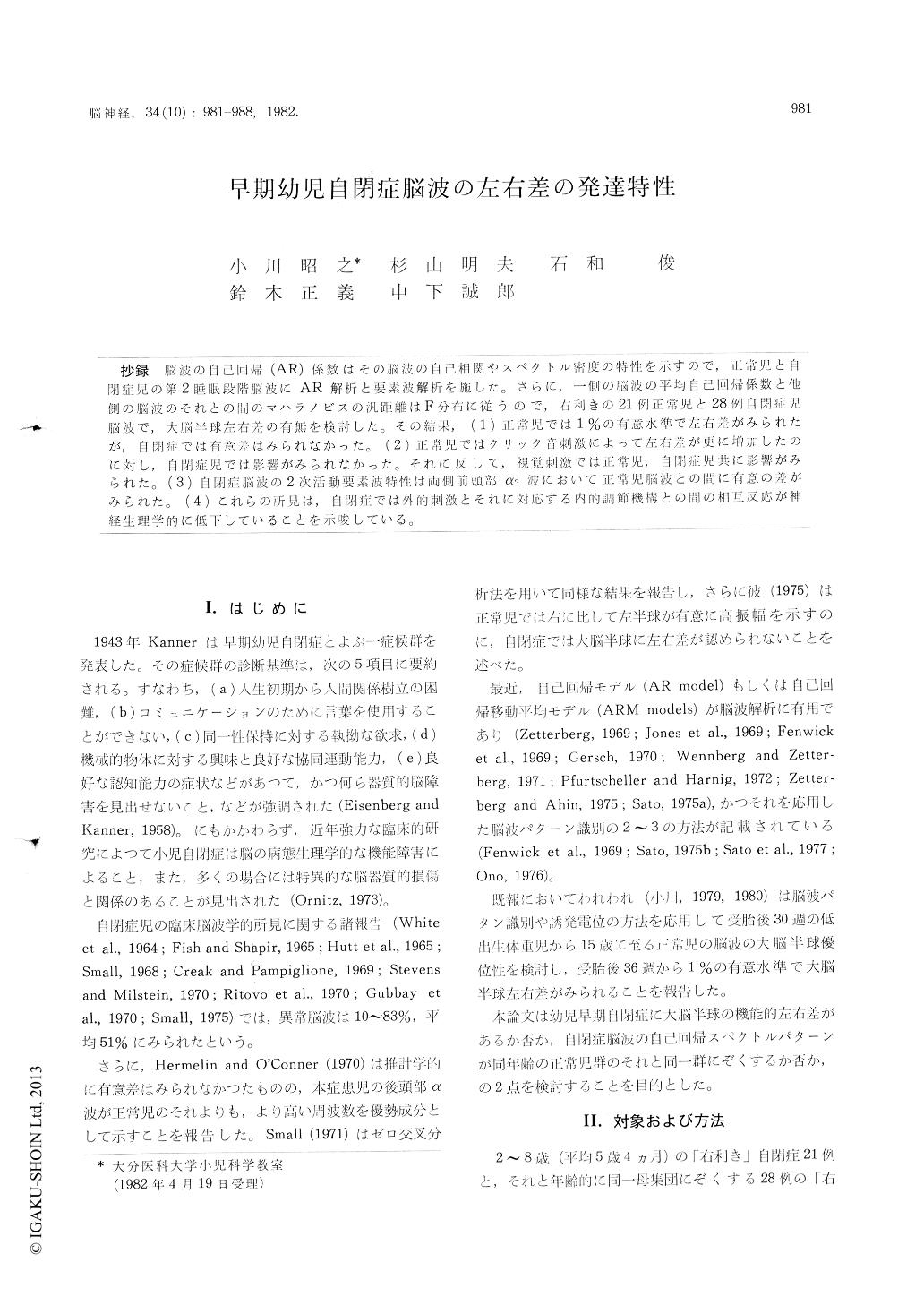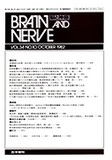Japanese
English
- 有料閲覧
- Abstract 文献概要
- 1ページ目 Look Inside
抄録 脳波の自己回帰(AR)係数はその脳波の自己相関やスペクトル密度の特性を示すので,正常児と自閉症児の第2睡眠段階脳波にAR解析と要素波解析を施した。さらに,一側の脳波の平均自己回帰係数と他側の脳波のそれとの間のマハラノビスの汎距離はF分布に従うので,右利きの21例正常児と28例自閉症児脳波で,大脳半球左右差の有無を検討した。その結果,(1)正常児では1%の有意水準で左右差がみられたが,自閉症では有意差はみられなかった。(2)正常児ではクリック音刺激によって左右差が更に増加したのに対し,自閉症児では影響がみられなかった。それに反して,視覚刺激では正常児,自閉症児共に影響がみられた。(3)自閉症脳波の2次活動要素波特性は両側前頭部α2波において正常児脳波との間に有意の差がみられた。(4)これらの所見は,自閉症では外的刺激とそれに対応する内的調節機構との間の相互反応が神経生理学的に低下していることを示唆している。
Autoregressive (AR) analysis and component analysis were applied to EEGs during sleep stage 2 of normal and autistic children, since AR-coefficients of EEG characterize the autocovariance and power spectral density of EEG. In addition, as the Mahalanobis' generalized distance of the average AR coefficient vector of an EEG group at one side from that at the opposite side follows a F-distribution, the statistical inferences were carried out, whether or not there is hemispheric specialization in EEG in 21 right handed autistic children and whether there is difference between AR-spectral pattern of EEG in the autistic child-ren and that of 28 normal children of the same age range or not. The results obtained were as follows :
1) The significant hemispheric lateralization in EEG at the significant level of 0. 01 was observed in normals, whereas none of the lateralization was confirmed in autistic children.
2 ) The random click stimulation caused a cumulative effect on the hemispheric lateralization in the normals, but not in the autistic children. On the contrary, the effects of random flash light stimulation on hemispheric asymmetry were verified in the autistic children as well as in the normals.
3 ) The EEG components of autistic children were significantly different from the normal ones in frequency range of alpha-2 component wave at bilateral frontal (F1 and F2) regions and the activity of these component waves were higher in the autistic children than in the normal ones over 5 years-old.
4) These findings suggest that autistic children are not only less responsive to external stimuli, but also neurophysiologically less active in the internal regulatory mechanism.

Copyright © 1982, Igaku-Shoin Ltd. All rights reserved.


